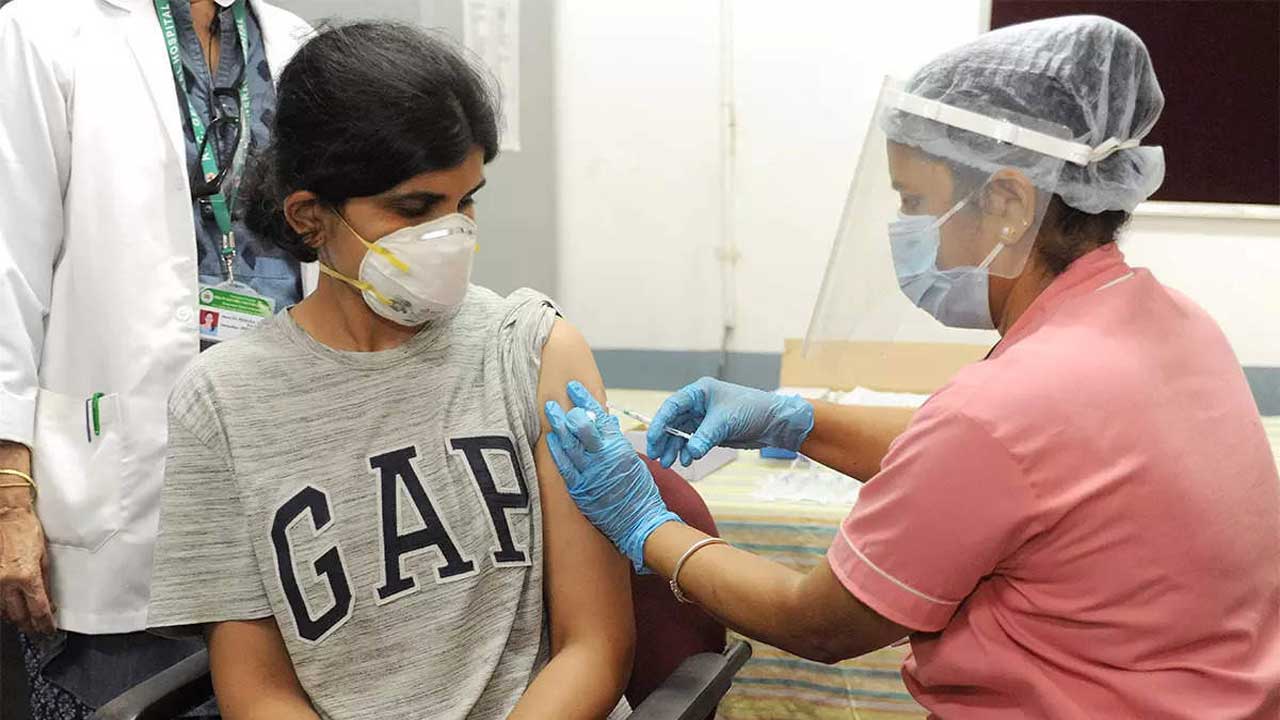The Centers for Disease Control and Prevention on Monday removed language from its website that said the novel coronavirus spreads through airborne transmission, the latest example of the agency backtracking from its guidance.
The agency said the guidance, which went up Friday largely without notice until late Sunday, should not have been posted because it was an early draft.
"Unfortunately an early draft of a revision went up without any technical review," said Jay Butler, the CDC's deputy director for infectious diseases. "We are returning to the earlier version and revisiting that process. It was a failure of process at CDC."
Evidence that the virus floats in the air has mounted for months, with an increasingly loud chorus of aerosol biologists pointing to super-spreading events in choirs, buses, bars, and other poorly ventilated spaces. They cheered when the CDC seemed to join them in agreeing that the coronavirus can be airborne.
Experts who reviewed the CDC's Friday post had said the language change had the power to shift policy and drive a major rethinking on the need to better ventilate indoor air.
Jose-Luis Jimenez, a chemistry professor at the University of Colorado at Boulder who studies how aerosols spread the virus, told The Washington Post before the CDC reversed its guidance that "this is a good thing if we can reduce transmission because more people understand how it is spreading and know what to do to stop it."
Although CDC officials said Friday's post was a mistake, Democratic lawmakers were incredulous. Rep. Raja Krishnamoorthi, D-Ill., tweeted Monday afternoon that he would investigate why the language to the airborne transmission had been scrubbed.
The change on Monday was the third time the CDC provided coronavirus guidance or recommendations only to reverse its stance. In the spring, it revised information about contact transmission within days of publishing it. The White House coronavirus task force had directed the agency to change those guidelines in August, stating that asymptomatic people did not need to be tested. Last week the CDC changed its position again, encouraging anyone at risk to get tested.
The agency had posted information Friday stating that the virus can be transmitted over a distance beyond six feet, suggesting that indoor ventilation is key to protecting against a virus that has now killed nearly 200,000 Americans. Whereas the agency previously warned that the virus mostly spreads through large drops encountered at close range, on Friday, it said "small particles, such as those in aerosols," were important vectors.
"Airborne transmission is plausible and, I would say, possible," Butler said. But he said data did not suggest that the coronavirus is spread primarily through the air, unlike diseases such as tuberculosis.
Butler said the Friday guidance overstated the agency's stance on the airborne spread. "If I did not know any better, I would think that we were saying that airborne transmission is very important, if not the main mode of transmission," he said. "That does not reflect our current state of knowledge."
If the airborne spread were the main route, Butler said he would have expected the disease to travel even faster around the globe than it did. "The epidemiology seems pretty clear that the highest risk is in household contexts," he said, meaning through the proximity of one family member or roommate to another.
Sudden flip-flops on public guidance are antithetical to the CDC's rules for crisis management. After disastrous communications during the 2001 anthrax attacks - when white powder in envelopes sparked widespread panic - the agency created a 450-page manual outlining how U.S. leaders should talk to the public during crises.
Protecting vulnerable people from a virus that is infecting millions depends on U.S. leaders issuing clear public-health instructions and the public's trust to follow directions that could save their lives.
It was also the latest disorienting turn in a scientific debate with enormous public consequences for how we return to schools and offices. The debate is over whether the extreme infectiousness and tenacity of the coronavirus are due to its ability to spread well over six feet, especially indoors, in small particles that result from talking, shouting, singing, or just breathing.
Many experts outside the agency say the pathogen can waft over considerably longer distances to be inhaled into our respiratory systems, especially if we are indoors and airflow conditions are stagnant.
"Poor ventilation can play a major role in super spreading events when individuals unaware that they are shedding virus, and are highly contagious, spend a long time in a crowded indoor environment where most people are not wearing masks," said Shelly Miller, a professor of mechanical engineering at the University of Colorado at Boulder who focuses on the quality of indoor air.
"There was a lot of confusion early on because WHO said adamantly that the disease is not airborne. There's also, somehow, a higher bar of proof required for a disease to be officially considered to transmit through the air," added Virginia Tech civil and environmental engineering professor Linsey Marr. "That's due to historical bias, I think, and the fact that you can't see aerosols."
Jimenez said a default assumption exists among public health experts that airborne transmission is rare in the world of pathogens. For other diseases, it required decades of research to overcome that assumption, he said, as was the case with measles and tuberculosis, both of which were originally assumed to be passed by large droplets. Experiments with sneezing guinea pigs, conducted by Richard Riley and his colleagues at Johns Hopkins University in the 1950s, ultimately helped persuade the medical field that tuberculosis was airborne.
In July, Marr, Miller, Jimenez, and more than 200 of their colleagues sent a letter about airborne coronavirus transmission to the World Health Organization, which responded by acknowledging the "emerging evidence" that the pathogen can spread through the air.
"To the general public, airborne can evoke fear and panic. People think of the movie 'Contagion,' which is like 'Jaws' but for infectious diseases," Marr said at a workshop on airborne transmission held in late August sponsored by the National Academies of Sciences. She cited a report by public-health experts in Hong Kong who concluded that fear of "panic and political blame" caused a reluctance among officials to label the first SARS virus as airborne.
But she emphasized that there are important differences in the environments that might alter how an airborne virus might spread - indoors vs. outdoors, a clinical setting vs. not.
She described a theoretical exhalation of coronavirus akin to the plume of smoke from a cigarette. "Once you get beyond that plume, anything that small enough to stay floating in the air can travel, you know, quite far across the room," Marr told The Post. "Even if you're in a room where the air seems still, there's the movement of the air that can carry things across the room."
Unlike ballistic droplets from a cough, which arc-like cannonballs launched from a nose or mouth until they splash against a person or drop to the ground, aerosols float on the wind and can be unwillingly inhaled.
- - -
Scientists are trying to understand how some of the biggest virus super-spreading events can be explained by not only the assumption of airborne viral particles but also the conditions of particular indoor spaces, including their ventilation systems and how much they allow for the circulation of fresh air.
In one of the most startling scientific offerings, Bjorn Birnir, a mathematician at the University of California at Santa Barbara, studies three well-documented cases in which the coronavirus spread rapidly and widely in an enclosed or indoor environment - a restaurant in Guangzhou, China; a bus traveling in China's Zhejiang province; and a call center in Seoul.
Constructing a model of how virus particles from our breath flow through indoor air when ventilation is low, Birnir found that the popular six-foot rule for social distancing can be insufficient in these circumstances. People much farther away from an infected individual can breathe in levels of the virus that might be expected only if they were standing or sitting right next to that person.
In the case of the restaurant, for instance, where one sick person infected nine others. Birnir's model, which has not yet been published in a peer-reviewed journal, found that thanks to poor ventilation, the virus's concentration away from the sick person grew so high that within seven minutes, it was as if many others in the space were sitting directly next to that person.
On the bus, a single person infected 24 others throughout two 50-minute rides, but people sitting near open windows were spared. In the call center, where 97 people were ultimately infected, one individual appears to have infected several others through close contact, and then as the group worked together, the virus spread through the air thanks to the presence of several sick people in a large indoor work area.
"The SARS-CoV-2 Coronavirus attacks in two steps," Birnir wrote. "The first step is a linear spread between individuals with a couple of days delay. The second step is an exponential spread effected by the air-conditioning system affecting a much larger number of people. Thus in the second step, the ventilation becomes the super-spreader."
Several experts consulted by The Post offered technical critiques of Birnir's model but did not disagree with the main conclusion: Viral particles can build up high concentrations in spaces where the air is not adequately changed.
"It makes sense the concentration of droplets increases over time and if they are not removed by the HVAC system, they stay in the space and increase the probability of infection," said building engineer Raj Setty, the principal of Setty Associates and a member of the Epidemic Task Force at ASHRAE, an international society focused on building standards.
The model "highlights the need that if you are in an enclosed space - a range of different types of spaces, from a building to a public transit or vehicle - that outdoor air is important in moving out that contaminated air stream," said Krystal Pollitt, an environmental health sciences expert at Yale University, who was not involved with this research.
Much remains unknown. It's not clear precisely what the infectious dose of the coronavirus is - and it probably varies for different individuals. It is clear that the duration of time that one spends in infectious space matters, but no one can give precise guidelines on how long is too long. Nor is it entirely clear to what extent there are real "super-spreading" individuals who, for some reason, carry extremely high viral loads that they expel into the air - something Birnir says he doubts - as opposed to particularly stuffy indoor spaces, which allow the virus to accumulate.
What's clear from such cases is that while the virus surely spreads slowly in households among family members, it also spreads rapidly in indoor events that bring lots of people together.
Perhaps most telling of all is the infamous March choir practice in Skagit Valley, Wash., where 53 out of 61 attendees are suspected to have been infected by a single sick individual over roughly 2 1/2 hours of practice. The participants did not interact much socially, except to sing - making this a difficult-to-dispute case of airborne transmission over large distances in a space where the air was not changing often enough to clear out the virus, and where someone was propelling the virus over extra-long distances due to the exertion of singing.
The Skagit choir case is "the most damning" of the super spreading events he's examined, Jimenez said. He and his colleagues, in a study in review and submitted for publication to the journal Indoor Air, modeled the likely spread of the virus through the church hall based on the behavior of the one choir member who infected dozens of others.
That person, the "index case," arrived just as the rehearsal began and did not mingle. Because the singers remained in fixed positions in the hall, "there were no opportunities for large droplets to travel from person to person," Jimenez said. "It becomes extremely implausible it was anything but aerosol transmission."
In the meantime, many experts are racing ahead with plans to make indoor spaces safer by improving their ventilation.
Pollitt and Sten Vermund, the dean of the Yale school of public health, are working with public and private schools in Connecticut to prevent the spread of coronavirus. Pollitt and her colleagues created a flowchart to guide schools, which, she said, could apply to offices and other public spaces.
Recommendations include: disable sensor-based ventilation to ensure the air in a room is constantly flushed. Reverse the blades of ceiling fans to draw air up and away from the plumes. And open windows.
But industrial hygiene only works if human behavior rises to meet it. "If you're not having individuals wearing masks, physical distancing, having good hand hygiene, then you can't engineer yourself out of a bad situation," Pollitt said.

 The agency said the guidance, which went up Friday largely without notice until late Sunday, should not have been posted because it was an early draft
The agency said the guidance, which went up Friday largely without notice until late Sunday, should not have been posted because it was an early draft




.png)














.jpeg)



.jpg)




.jpg)





.jpeg)

.jpg)


